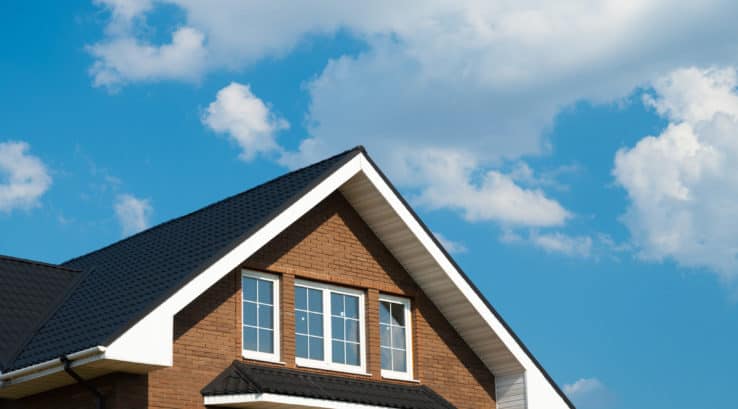Take a look at any child’s drawing of a house and most likely there’s a triangle on top of a square which signifies the roof. But, choosing between a pitched roof and a flat roof is not child’s play. There are real pros and cons between a home’s pitched roof and flat roof.
This blog will explore the differences between pitched roofs and flat roofs. Find out more about both types of roofing styles and which one fits your lifestyle.
What Is a Pitched Roof?
A pitched roof is probably the type of roof you think of when you’re thinking of a typical house. Any roof that has a peak and slopes downward is considered a pitched roof. They are the most common roofing style.
Advantages
- Pitched roofs tend to have a longer lifespan compared to flat roof styles. The average lifespan of a pitched roof is about 20-50 years. This can vary according to the type of roofing materials used in constructing your roof and other climate factors.
- Another pro to a pitched roof is that they usually don’t require much maintenance. Their sloped design helps to lead precipitation off your roof and decrease the possibility of water damage.
Disadvantages
- The main disadvantage to a pitched roof is the installation cost, which is higher than that of a flat roof.
- Considered a disadvantage for those with an eye for the modern design, pitched roofs can contradict a modern façade.
What Is a Flat Roof?
Flat roofs are exactly what they sound like – a style of roofing that is flat as opposed to having a peak. This is a more modern trend of roofing typically used in commercial buildings, but is slowly becoming more common in the housing market.
Advantages
- A flat roof style has a unique aesthetic of a modern structure.
- Low up-front material costs. Compared to a pitched roof installation, flat roofs typically are less expensive mostly because flat roofing materials often come in large roles versus pitched roofing materials in small sheets. The roof decking system also requires less lumber.
- Installation costs are less expensive on a flat roofing system as are repair costs.
- Flat roofs are safer to repair and maintain due to the lack of slope and less risk of slipping and falling.
Disadvantages
- Opposite of pitched roofs, flat roofs do tend to require more maintenance and have a shorter lifespan comparatively. Flat roofs have an average lifespan of about 10 years.
- Flat roofs can be susceptible to water damage due pooling of water after rainfall and lingering precipitation.
- Structurally, larger flat roofs made need additional support beams in the interior of the home to support to large expanse.
- The energy efficiency of flat roofs can be an issue because unlike in pitched roofs, flat roofs do not allow for attic insulation.
Flat roofs remain the popular choice for commercial buildings due to the lower cost and their ability to support heavy equipment such as air conditioning units. Flat roofs also provide the option for rooftop bars, gardens and other amenities growing in popularity in commercial or multi-family buildings.
Overall, both styles of roofs have been proven effective and fits everyone’s needs differently. Whatever style you choose for your home making sure your roof is constructed with high quality materials and installed by expert roofing contractor is key to a long and healthy roofing system. Call the experts at Thompson Creek where our roofing technicians use building science to deliver so much more than just a new roof.


